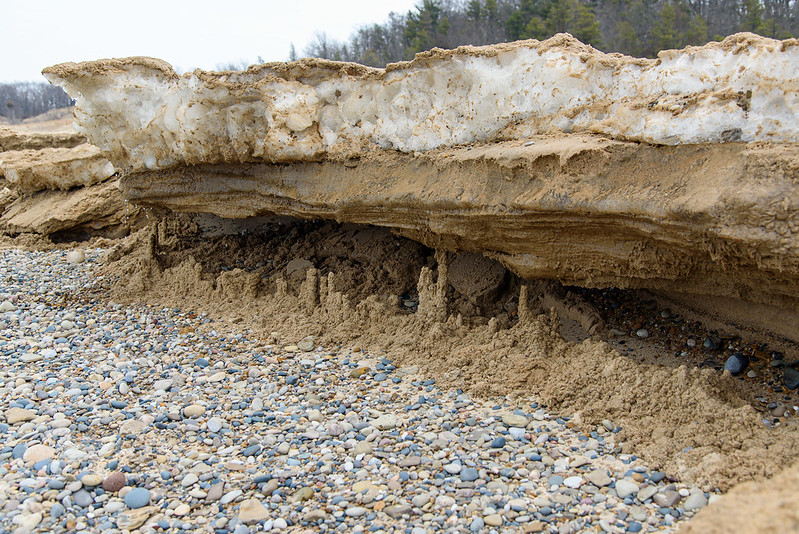
I've seen this phenomenon many times at the Indiana Dunes National Park, miniature sand castles formed by dripping water. Every time I see this, I'm intrigued. I'm also brought back to my childhood vacations in Florida where a friend from Pennsylvania made sandcastles in an unusual way. He would begin by filling a bucket with sand and water, then he would take a handful of the saturated sand and let it drip out of his hand down onto the beach where it would form towers similar to these! Somehow, he must have learned this from someone who has witnessed this.
I've been told sandcastles built this way are called "drip castles" and that certainly describes this method perfectly. People have simply taken the physics of water and sand, and used it to their advantage to create strong castles.
Judging by the state of these drip castles when I arrived at the beach, and then again when I made my way out, these take quite a long time to create. Not terribly long, but hours for sure if the water isn't dripping too rapidly. If the water drips too fast, I think the sand will simply wash away instead of stacking. I've also seen in the past, where the water dripped directly onto a rock and instead of the sand building up, it washed away the sand around the rock, but the sand directly under the rock was protected, so the rock was basically resting on a sand pedestal.
These are just another fleeting formation created by nature here at the Indiana Dunes National Park. Every visit is different, even if you walk the exact same path.
To get an idea of how much change takes place each day, take a look at the photo above showing an area of beach that was washed away this winter. This "cliff" is three or four feet tall and shows layer after layer of sand, rock, and pebbles. You can look at these layers and read how the lake behaved at that time. Some harsh waves wash away the sand and expose rocks, while more gentle waves deposit the sand over the rocks.
Every moment of every day, the waves and wind are working at changing the beach - it's a natural cycle that can't (and shouldn't) be stopped by human interference.




No comments:
Post a Comment